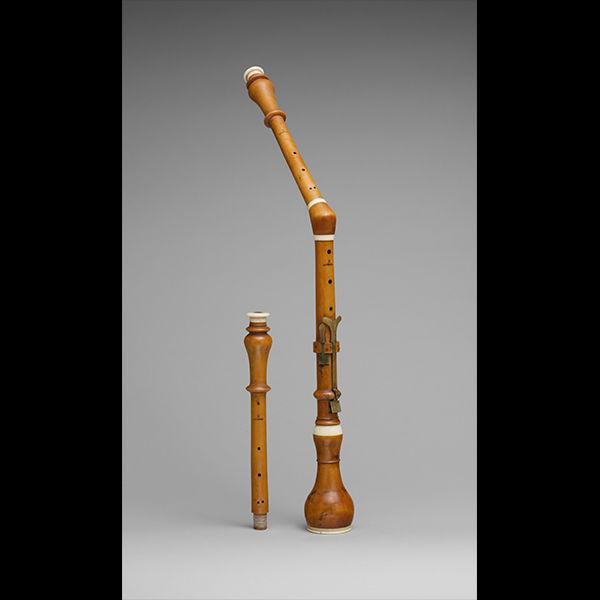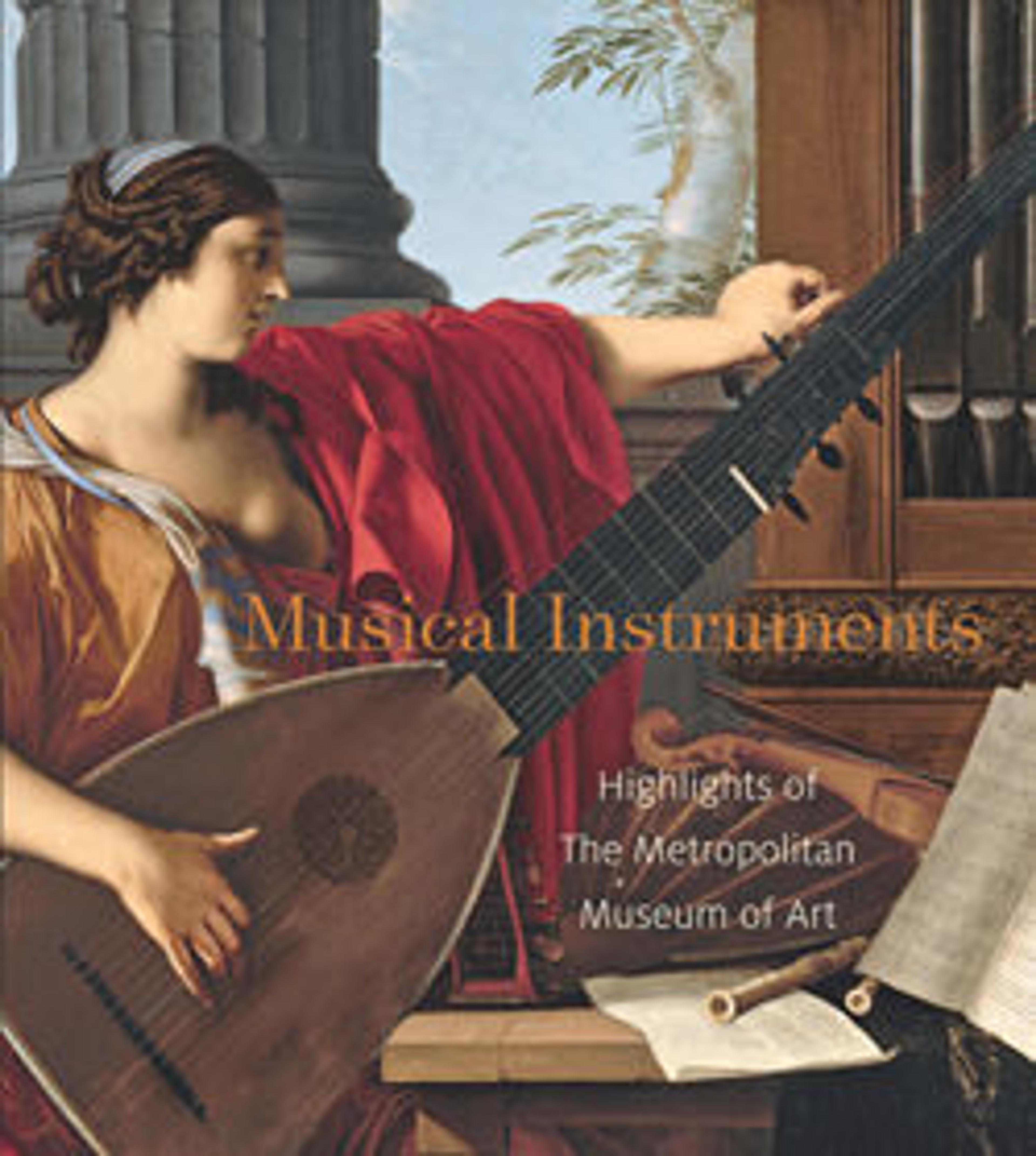Pipa (琵琶 )
The pear-shaped lute slowly migrated from Central Asia into China during the Han and Sui dynasties (1st-7th century). It eventually became the pipa; the term describes the original playing motion of the plectrum held in the performer's right hand: p'i, "to play forward" (toward the left), and p'a, "to play backward" (toward the right). Until the mid-tenth century, the pipa was held horizontally (guitar style), and its twisted silk strings were plucked with a large triangular plectrum. Toward the end of the Tang dynasty, musicians began using their fingernails to execute the exuberant and programmatic repertory that was gaining popularity and that became the national style. To facilitate the use of the fingers, the instrument began to be held in a more upright position. In addition to its use in the opera and in storytelling ensembles, the pipa has a solo repertory of highly programmatic, virtuosic music.
The spectacular back and sides of this unique Ming-dynasty instrument feature more than 110 hexagonal ivory plaques, with thinner bone plaques on the neck. Each plaque is carved with Taoist, Confucian, or Buddhist figures and symbols signifying prosperity, happiness, and good luck. These include images of various gods and immortals, such as Shou Lao, the Daoist god of longevity, who is shown with a prominent forehead on the single plaque at the very top. When the instrument is played, this expert workmanship remains unseen by the listener, as the back faces the player. The front is relatively plain but shows signs of use. The ivory string holder bears a scene featuring four figures and a bridge; an archaic cursive inscription; and, at the lip, a bat motif with leafy tendrils. Above the lower frets, two small insets depict a spider and a bird, and just before the rounded upper frets, a trapezoidal plaque portrays two men, one with a fish. The finial repeats the bat (good luck) motif.
The spectacular back and sides of this unique Ming-dynasty instrument feature more than 110 hexagonal ivory plaques, with thinner bone plaques on the neck. Each plaque is carved with Taoist, Confucian, or Buddhist figures and symbols signifying prosperity, happiness, and good luck. These include images of various gods and immortals, such as Shou Lao, the Daoist god of longevity, who is shown with a prominent forehead on the single plaque at the very top. When the instrument is played, this expert workmanship remains unseen by the listener, as the back faces the player. The front is relatively plain but shows signs of use. The ivory string holder bears a scene featuring four figures and a bridge; an archaic cursive inscription; and, at the lip, a bat motif with leafy tendrils. Above the lower frets, two small insets depict a spider and a bird, and just before the rounded upper frets, a trapezoidal plaque portrays two men, one with a fish. The finial repeats the bat (good luck) motif.
Artwork Details
- Title: Pipa (琵琶 )
- Period: Ming dynasty (1368-1644)
- Date: late 16th–early 17th century
- Geography: China
- Culture: Chinese
- Medium: Wood, ivory, bone, silk
- Dimensions: L. 37 × W. 9 15/16 × D. 1 1/8 in. (94 × 25.3 × 2.9 cm)
see measurements drawing - Classification: Chordophone-Lute-plucked-fretted
- Credit Line: Bequest of Mary Stillman Harkness, 1950
- Object Number: 50.145.74
- Curatorial Department: Musical Instruments
Audio

9379. English Horn
0:00
0:00
We're sorry, the transcript for this audio track is not available at this time. Please email info@metmuseum.org to request a transcript for this track.
More Artwork
Research Resources
The Met provides unparalleled resources for research and welcomes an international community of students and scholars. The Met's Open Access API is where creators and researchers can connect to the The Met collection. Open Access data and public domain images are available for unrestricted commercial and noncommercial use without permission or fee.
To request images under copyright and other restrictions, please use this Image Request form.
Feedback
We continue to research and examine historical and cultural context for objects in The Met collection. If you have comments or questions about this object record, please complete and submit this form. The Museum looks forward to receiving your comments.
